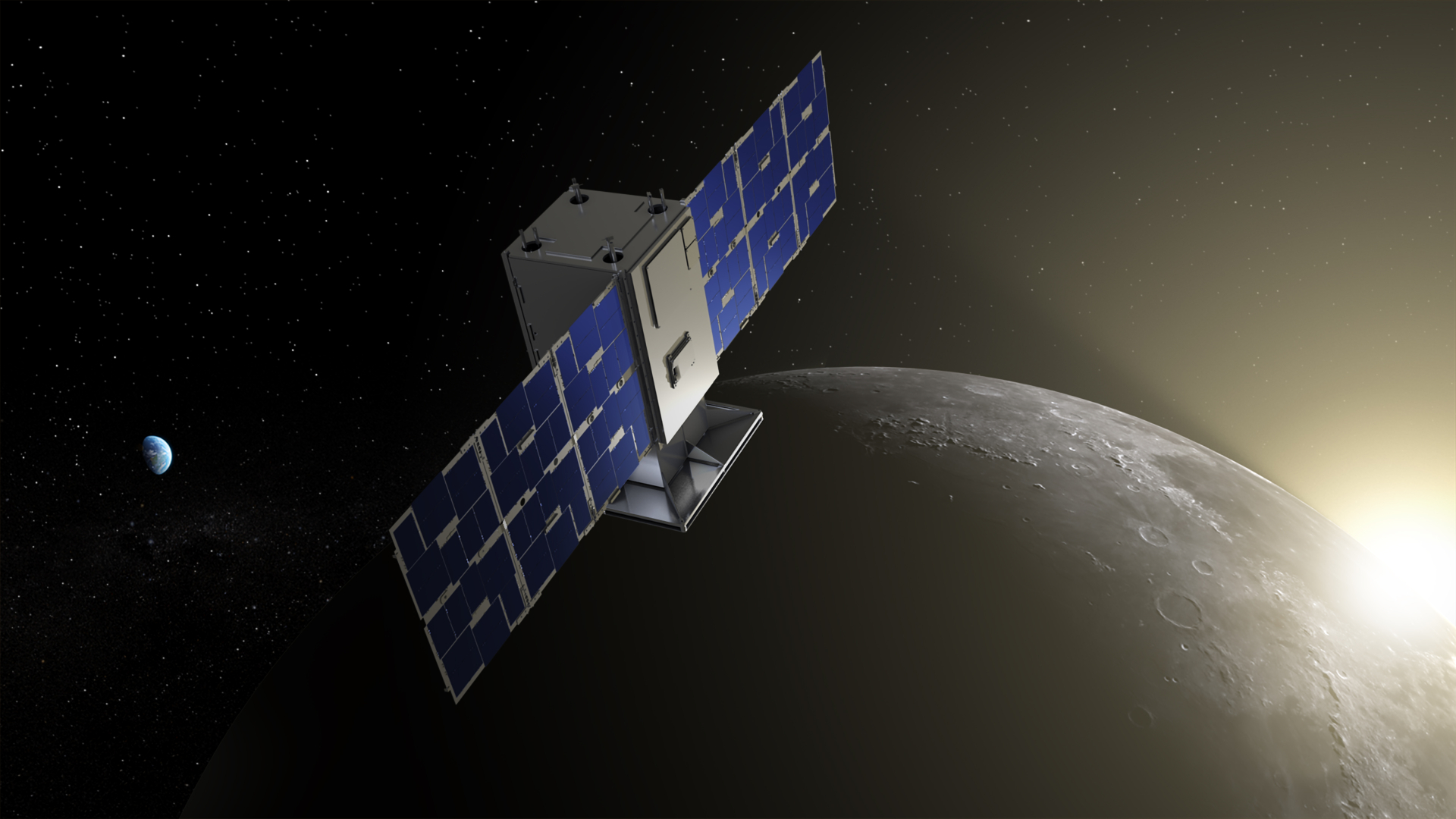
NASA's tiny CAPSTONE probe has refined its long and looping path to the moon once again.
The 55-pound (25 kilograms) CAPSTONE cubesat performed its second engine burn this morning (July 12). The autonomous maneuver, which occurred at about 11:30 a.m. EDT (1530 GMT), lasted for just 53 seconds and consumed 35 grams (1.2 ounces) of fuel, said representatives of the Colorado-based company Advanced Space, which operates the mission for NASA.
It was the second thruster firing for CAPSTONE, which launched to Earth orbit atop a Rocket Lab Electron booster on June 28. The microwave-oven-sized spacecraft then spent the next week spiraling farther and farther from our planet thanks to engine burns by Rocket Lab's Photon satellite bus.
Related: Why it'll take NASA's tiny CAPSTONE probe so long to reach the moon
CAPSTONE separated from the Photon as planned on July 4, beginning its solo trek to the moon, which is scheduled to end with an arrival in a near rectilinear halo orbit (NRHO) on Nov. 13. The trip will take so long because CAPSTONE launched on the 58-foot-tall (19 meters) Electron, which is designed to deliver small satellites to Earth orbit; the cubesat therefore must take a highly fuel-efficient route to the moon.
It hasn't all been smooth sailing for CAPSTONE. Mission team members lost contact with the cubesat shortly after its deployment on July 4 but managed to touch base again about a day later. The communications dropout was caused by an improperly formatted command, which briefly flummoxed CAPSTONE due to a fault in the cubesat's flight software, mission team members have said.
But the little moon probe now seems to be doing fine. It performed its first engine burn on July 7, firing its propulsion system for 11 minutes to change its velocity by 45 mph (72 kph) as planned.
Get the Space.com Newsletter
Breaking space news, the latest updates on rocket launches, skywatching events and more!
CAPSTONE's main mission goal is to verify the stability of its lunar NRHO, which no spacecraft has ever occupied before. NASA has selected this orbit for its Gateway space station, a key part of the agency's Artemis program of moon exploration.
The lunar cubesat will also conduct navigation and communications tests during its mission at the moon, which is expected to last at least six months.
Mike Wall is the author of "Out There" (Grand Central Publishing, 2018; illustrated by Karl Tate), a book about the search for alien life. Follow him on Twitter @michaeldwall. Follow us on Twitter @Spacedotcom or on Facebook.
Join our Space Forums to keep talking space on the latest missions, night sky and more! And if you have a news tip, correction or comment, let us know at: community@space.com.

Michael Wall is a Senior Space Writer with Space.com and joined the team in 2010. He primarily covers exoplanets, spaceflight and military space, but has been known to dabble in the space art beat. His book about the search for alien life, "Out There," was published on Nov. 13, 2018. Before becoming a science writer, Michael worked as a herpetologist and wildlife biologist. He has a Ph.D. in evolutionary biology from the University of Sydney, Australia, a bachelor's degree from the University of Arizona, and a graduate certificate in science writing from the University of California, Santa Cruz. To find out what his latest project is, you can follow Michael on Twitter.









